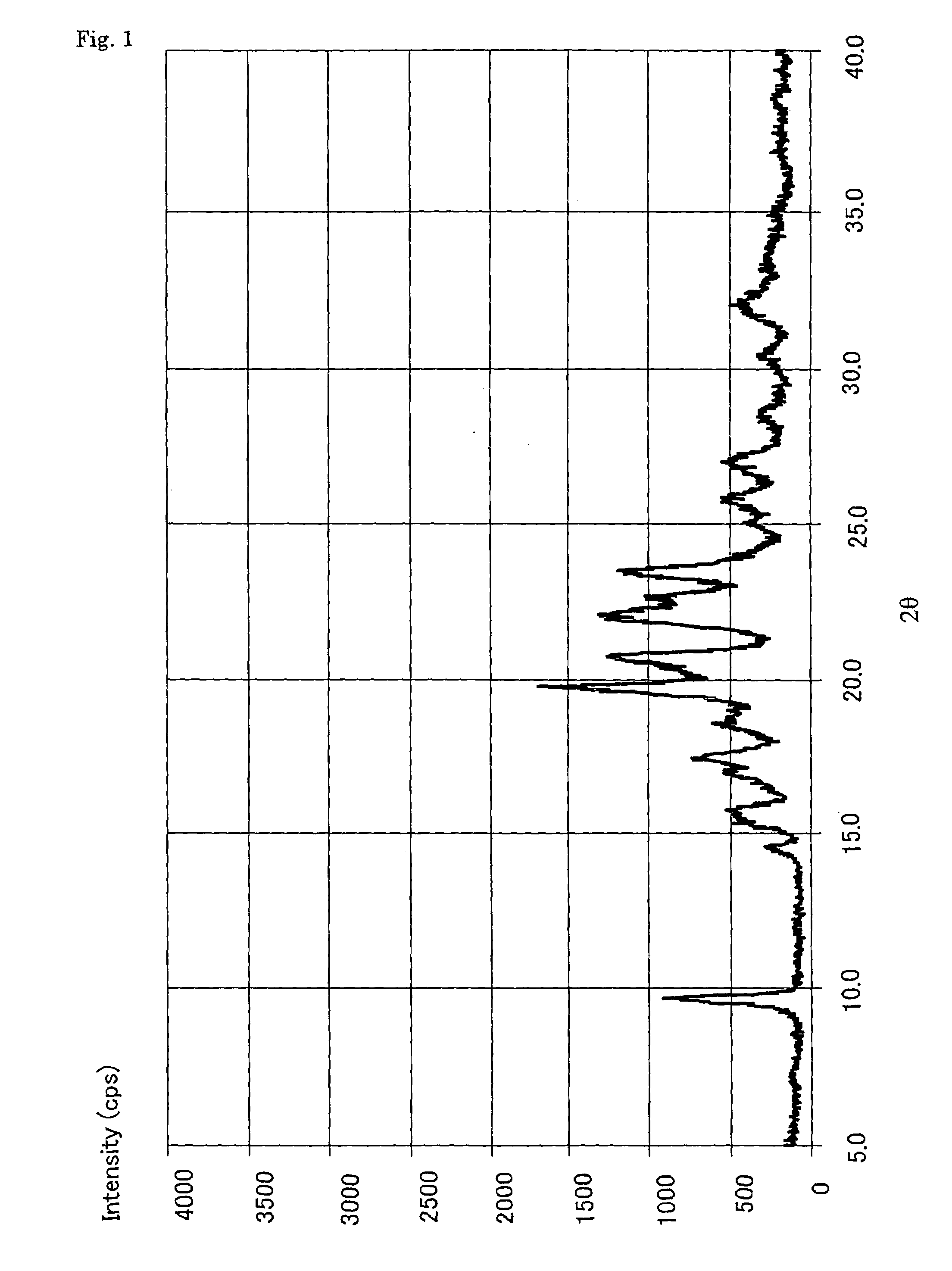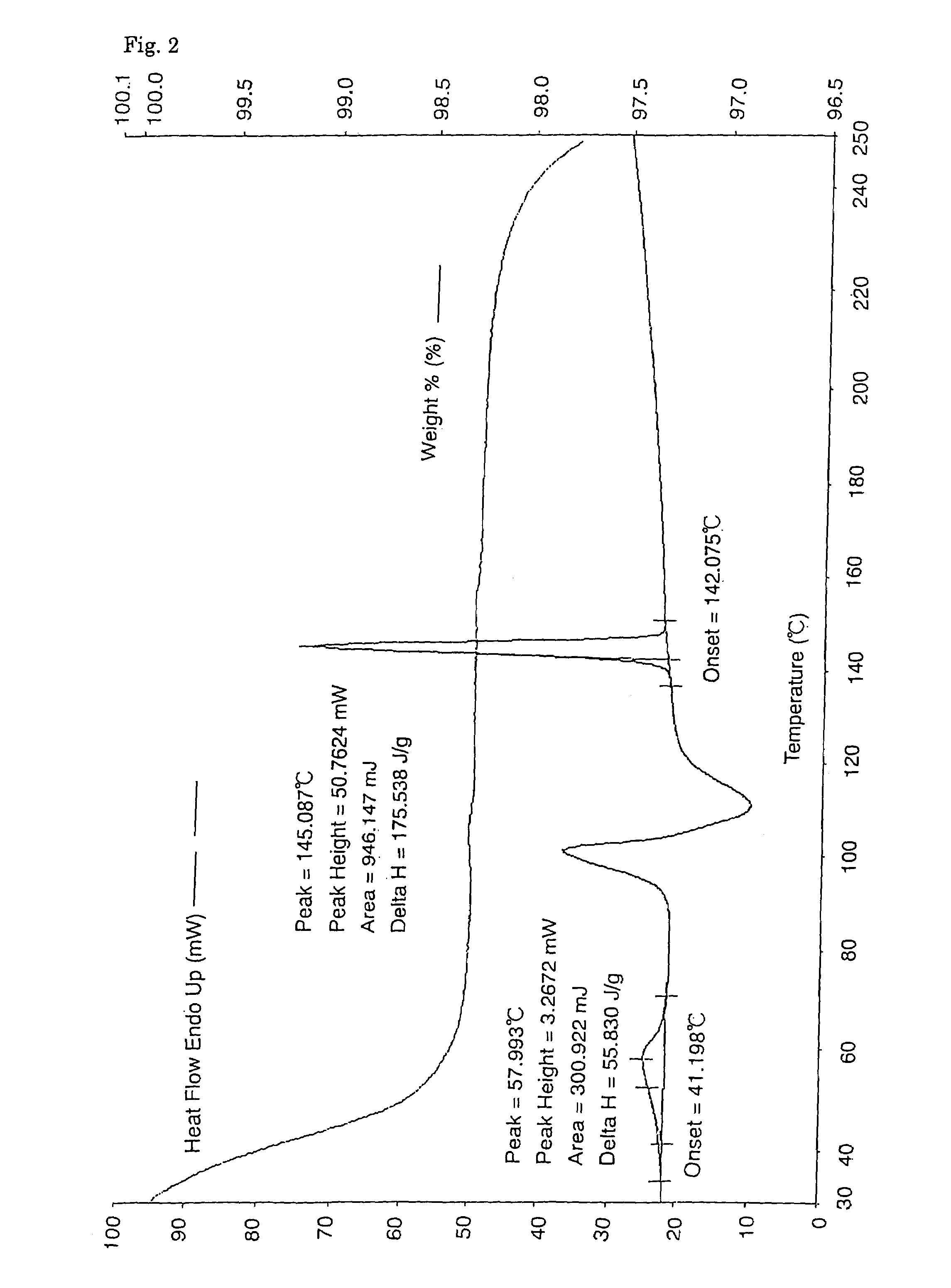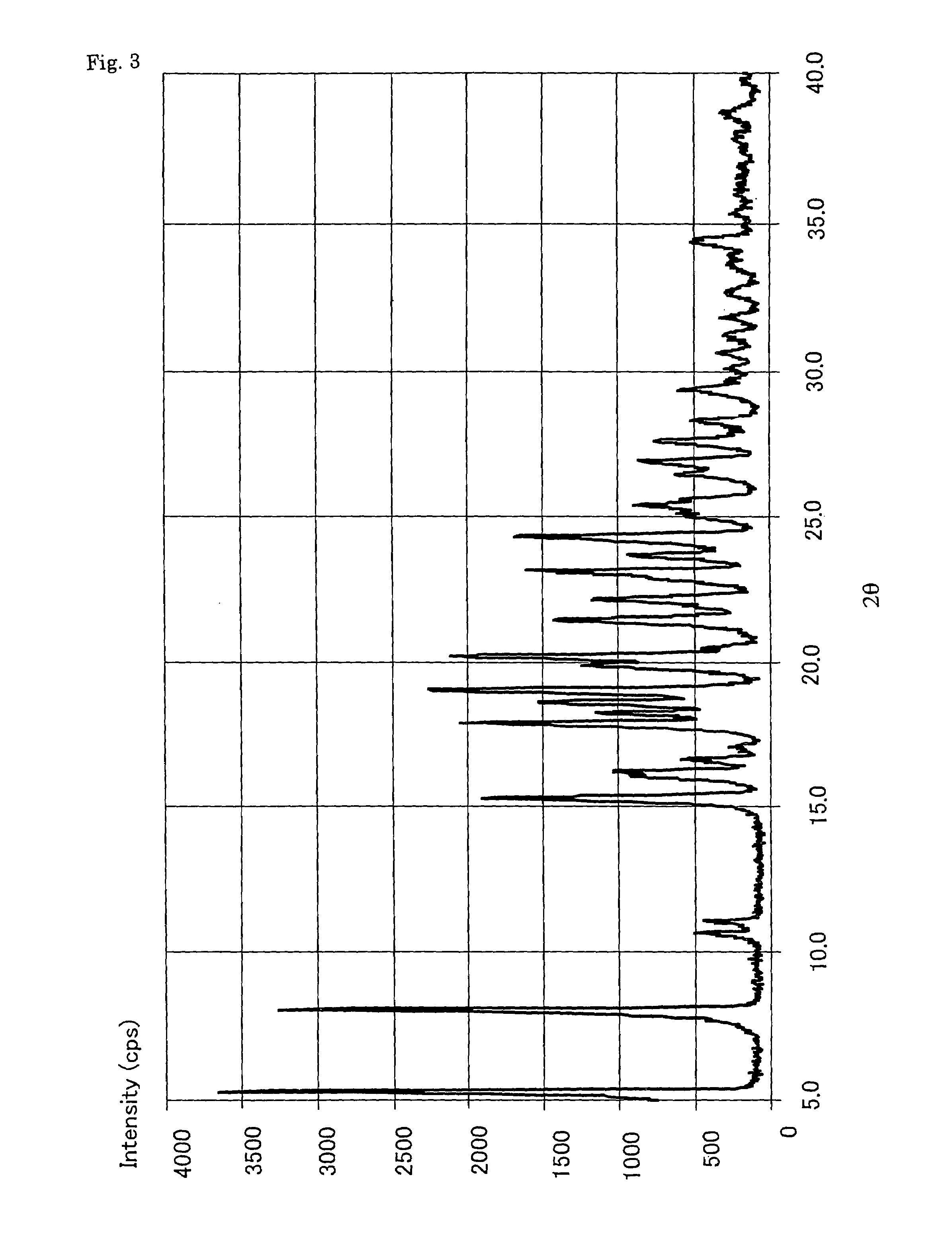Alpha-form or beta-form crystal of acetanilide derivative
a technology of acetanilide and derivatives, which is applied in the field of acetanilide derivatives, can solve the problems of different water content, still problematic use of acetanilide as a medicine,
- Summary
- Abstract
- Description
- Claims
- Application Information
AI Technical Summary
Benefits of technology
Problems solved by technology
Method used
Image
Examples
referential example 1
[0025]To a mixture of 5.90 kg of 4-nitrophenylethylamine monohydrochloride, 4.43 kg of (R)-mandelic acid, 2.94 kg of triethylamine and 22 L of N,N-dimethylformamide, 3.93 kg of hydroxybenztriazole and 5.58 kg of 1-(3-dimethylaminopropyl)-3-ethylcarbodiimide monohydrochloride (EDC) were added, and the mixture was stirred at around room temperature for 2 hours. 0.28 kg of EDC was further added, and the mixture was stirred at around room temperature overnight. The reaction solution was diluted with 110 L of water and extracted with ethyl acetate (60 L and 30 L). The organic layer was washed successively with 60 L of a 1M hydrochloric acid aqueous solution, 60 L of a 20% potassium carbonate aqueous solution and water (60 L and 60 L), and then concentrated in vacuo at 10 to 19° C. The residue was dissolved in 35 L of toluene by heating (at 87° C.), cooled, and then stirred at 20° C. overnight. A formed crystal was collected by filtration and washed with 10 L of toluene, followed by dryin...
referential example 2
[0028]A mixture of 7.51 kg of (R)-2-hydroxy-N-[2-(4-nitrophenyl)ethyl]-2-phenylacetamide, 23 L of 1,3-dimethyl-2-imidazolidinone and 23 L of tetrahydrofuran was cooled to −18° C., to which was then dropped 49.4 kg of 1M borane-tetrahydrofuran solution at not higher than −7° C. Thereafter, the temperature was increased to 70° C., and the mixture was stirred for 5 hours. The reaction mixture was cooled to −12° C., to which were then added 2.9 kg of methanol and 5.9 kg of concentrated hydrochloric acid at not higher than 5° C. The mixture was stirred at 68° C. for one hour and concentrated in vacuo such that the inner volume became 50 L. 60 kg of 30% K2CO3 aqueous solution and 6 L of water were added, and the mixture was extracted with 75 L of ethyl acetate. The organic layer was washed with 75 L and concentrated in vacuo. The residue was added with and dissolved in 75 L of isopropanol at 40° C., and the solution was crystallized from 2.46 kg of concentrated hydrochloric acid, followed...
referential example 3
[0030]A mixture of 11.0 kg of (R)-2-[[2-(4-nitrophenyl)-ethyl]amino]-1-phenylethanol monohydrochloride, 110 L of methanol and 1.20 kg of wet 10% palladium-carbon (wetting rate: 54.2%) was stirred under a hydrogen atmosphere until absorption of hydrogen stopped. The reaction solution was filtered, and the filtrate was concentrated in vacuo. The residue was added with and dissolved in 40 L of methanol at 40° C., and the solution was crystallized from 220 L of diisopropyl ether, followed by stirring at 20° C. overnight. A crystal was collected by filtration and washed with 30 L of diisopropyl ether, followed by drying in vacuo. There was thus obtained 9.43 kg of (R)-2-[[2-(4-aminophenyl)ethyl]-amino]-1-phenylethanol monohydrochloride.
(Another Method) Method of Using Ethyl Acetate as Crystallization Solvent:
[0031]A mixture of 15.0 g of (R)-2-[[2-(4-nitrophenyl)-ethyl]amino]-1-phenylethanol monohydrochloride, 90 mL of methanol and 655 mg of wet 10% palladium-carbon (wetting rate: 54.2%) ...
PUM
| Property | Measurement | Unit |
|---|---|---|
| 2θ | aaaaa | aaaaa |
| angle | aaaaa | aaaaa |
| temperature | aaaaa | aaaaa |
Abstract
Description
Claims
Application Information
 Login to View More
Login to View More - R&D
- Intellectual Property
- Life Sciences
- Materials
- Tech Scout
- Unparalleled Data Quality
- Higher Quality Content
- 60% Fewer Hallucinations
Browse by: Latest US Patents, China's latest patents, Technical Efficacy Thesaurus, Application Domain, Technology Topic, Popular Technical Reports.
© 2025 PatSnap. All rights reserved.Legal|Privacy policy|Modern Slavery Act Transparency Statement|Sitemap|About US| Contact US: help@patsnap.com



